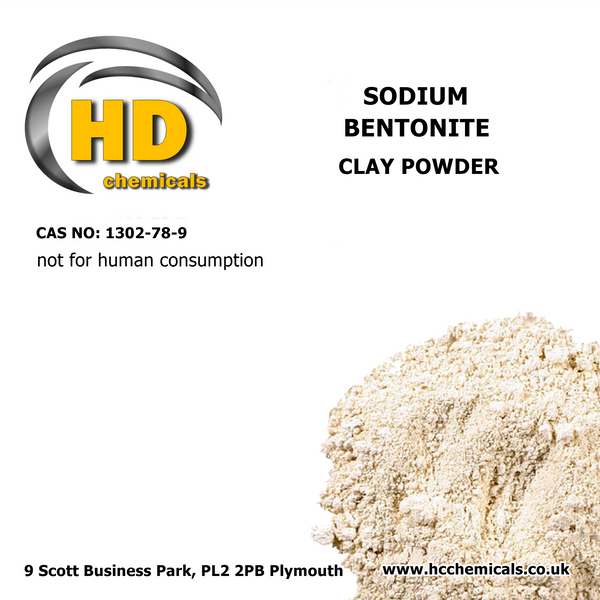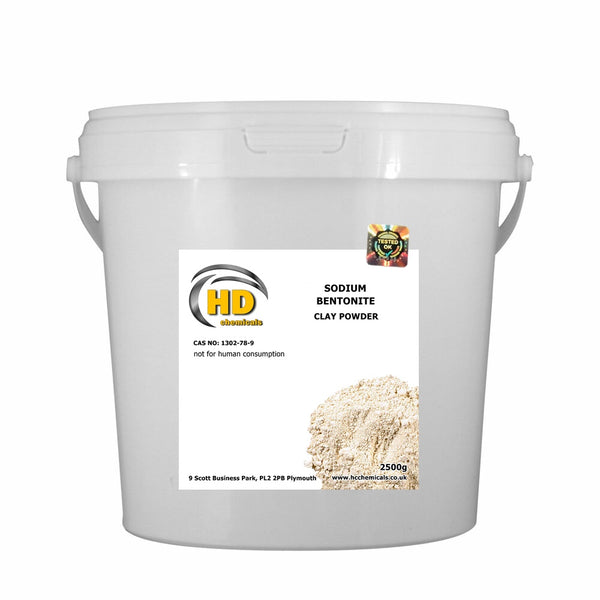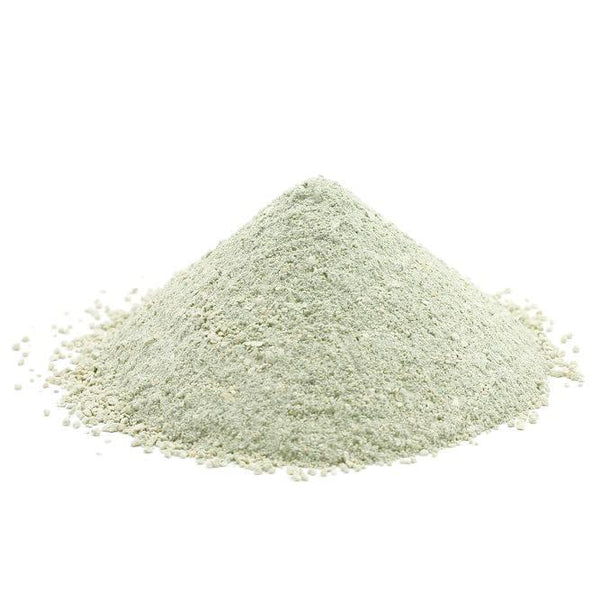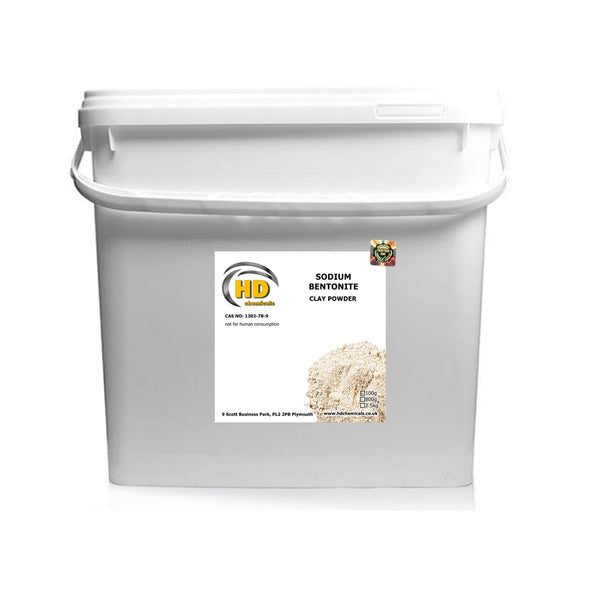Sodium Bentonite Clay Powder
SODIUM BENTONITE CLAY POWDER
CIVIL ENGINEERING GRADE
Sodium Bentonite is used in foundry, metallurgy, well drilling slurry, oil, agriculture. Bentonite is also used in chemical industry, environmental protection, zoology construction, ecological construction, building, paper making, textile. Bentonite also can be used in printing & dyeing, ceramics etc.
This clay is Engineering grade and suitable for use in engineering projects. It is commonly used for sealing ponds, lakes, landfill sites, lagoons etc (see below).
Sodium Bentonite is not recommended for cosmetic applications.
Properties of Bentonite Clay:
- CAS No: 1302-78-9
- EC No: 215-288-5
- Other names: sodium Bentonite, Montmorillonite, Aluminosilicate of sodium
- Appearance: solid powder
- Colour: Tan
- Odour: mild
- Bulk Density: 800 – 900 Kg/m3
When bentonite is mixed with water, the water molecules will enter between the clay plates, forcing them apart. While the plates are dispersed, the bentonite slurry becomes quite fluid. However, on standing the particles become oriented with the negative surfaces of the plates being attracted to the positive edges. Viscosity increases and a gel is formed – a reversible effect known as thixotropy.
A typical empirical formula for bentonite is:
(Al, Fe0.67 Mg0.33) Si4O10(OH)2Na,Ca0.33
USES FOR BENTONITE:
- Sealing ponds, lakes and landfills (more information below)
- Making Green Sand for sand casting aluminium (used between 5 and 11% mixed with sand and water)
- Well drilling slurry.
- Used as a binding agent in iron ore production.
Bentonite For Sealing Ponds:
Sodium Bentonite clay swells up to eighteen times its dry size when it becomes wet. Expanded bentonite forms an impermeable gel seal which makes an excellent pond sealant. Bentonite is environmentally safe and does not affect the water, livestock, or wildlife. When properly applied, it will not harm fish. For these qualities, bentonite also makes an excellent liner for new pond construction.
When sealing a leaking pond to prevent water loss through seepage, Bentonite powder can be applied directly to the soil in the pond bottom or it can be sprinkled on the surface of the water and allowed to settle to the bottom. This method is best suited to shallow ponds and not deeper ponds, where the granular bentonite is better.
There are three basic methods: the blanket method, the mixed blanket method and the sprinkle method. Bentonite is easily applied. In the case of small ponds, it can be applied with simple hand tools and for larger ponds, with ordinary farm equipment.













